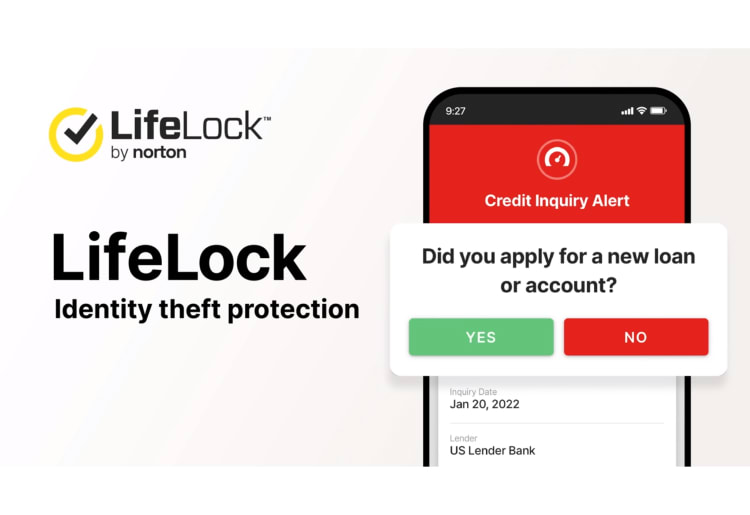With the surge in cyber threats, ID theft protection services have become our frontline force against online security.
However, understanding the subtle signs of identity theft and implementing proactive measures can also make a significant difference in securing your data. I'm here to help you discover how to navigate this ever-evolving landscape with tools like LifeLock.
» Scared of online shopping scams? Here are 10 ways to shop online safely.
Ways to Check for Signs of ID Theft
In 2022, over 440,000 people filed a credit card fraud complaint to the Federal Trade Commission. (FTC) You can avoid the same trouble by being vigilant about suspicious activities and learning to recognize ID theft.
Keep an eye out for the following:
You Receive Unfamiliar Notifications or Emails
Be wary of receiving unexpected emails or notifications regarding programs or benefits you haven't enrolled in or signed up for. These communications might signal that someone is using your personal information to open accounts without your knowledge.
A recent study revealed that while 95.1% of respondents are aware of email scams, only 59.3% feel confident in identifying them, and 37% are unsure if they can accurately identify a scam email.
When you receive unfamiliar notifications or emails, it's important to be vigilant to protect against potential identity theft. To stay safe, follow these key steps:
- Verify the Source: Before responding, check the sender's details. Visit the company's official website independently (avoid clicking links in the email) to confirm the email's legitimacy.
- Spot Red Flags: Look out for poor spelling, generic greetings, and urgent requests for personal information. These are common indicators of fraudulent emails.
- Avoid Clicking on Links: Refrain from clicking on any links or downloading attachments from suspicious emails. These could lead to phishing sites or contain malware.
- Update Your Security: Regularly change your passwords and enable two-factor authentication where available. This adds an extra layer of security to your accounts.
- Stay Informed: Keep up-to-date with common phishing techniques and identity theft scams. Awareness is a powerful tool in protecting your personal information.
Duplicate or Unexplained Correspondence
Pay close attention if you receive duplicate or multiple unexpected notifications. Make a note if they are related to matters like unemployment benefits or paid leave without any prior interaction. This repetition could signify potential fraudulent activity attempting to misuse your identity.
Stay alert by actively monitoring your correspondences for any irregularities or suspicious activities. Using a reliable tracking program to oversee your information's movement can help detect any unauthorized access.
Regular Contact Information Updates
It's essential to update your contact details regularly so that you know about any potential issues concerning your accounts or personal information. Being out of the loop might leave you unaware of possible problems unless you proactively contact the institution.
Don't leave these emails in your inbox without you taking action. If fraudsters have enough of your personal information, they can request to change your banking or governmental email or passwords. Once that happens, it's already too late. As soon as you receive emails like this, contact the relevant institution to verify changes.
» Here's how you can protect yourself from phishing attacks.
How Often Should You Check for Signs of ID Theft?
There isn't a specific timetable to follow, but keeping an eye on your credit score regularly is non-negotiable, in my opinion. It's essential to immediately double-check any peculiar or unexpected activity with the right people to avoid financial problems or loss.
Being proactive and following up on strange emails or letters makes it harder for scammers to take advantage. Changing your password immediately if you suspect a hack can stop any potential trouble.
Staying alert when it comes to checking your mail and emails, both incoming and outgoing, is critical to steering clear of financial problems and avoiding becoming one of the many real-life identity theft stories.

How to Safeguard Your Information
Protecting your sensitive data, particularly social security numbers and passwords, across platforms is paramount. I've realized from personal experience that even seemingly trivial details can be exploited by attackers to impersonate you.
Details as simple as your surname or address can be used by hackers in false emails and messages to appear authentic. Fraudsters can use family names and mobile numbers as security passwords to fake their identification. Exercise caution when sharing any personal information to help avoid fraudulent attempts.
Get familiar with safeguarding your passwords and knowing the risks of using the same ones everywhere. Hackers love finding similar passwords to break into all your different accounts. Avoid reusing passwords across multiple accounts. Create strong passwords that are difficult to crack and use two-step authentication where possible.
How LifeLock Monitors Identity Theft
LifeLock is a comprehensive identity theft protection service that monitors your personal information across various channels. Here's a breakdown of how it works for you.
LifeLock offers various services aimed at safeguarding personal information that can help protect you from identity theft, including credit monitoring and social security number monitoring.
It actively tracks your personal information across various channels, looking for signs of potential misuse or unauthorized access across sources, including the dark web.
Using sophisticated technology like artificial intelligence and machine learning, LifeLock keeps a vigilant eye on your data, scanning public records, financial transactions, and more.
It alerts you if it detects any suspicious activities related to your identity. Attempts to use your Social Security number (SSN), open new accounts in your name, or any unauthorized access to your existing accounts will set it off.

LifeLock's monitoring services cover a wide range of potential identity theft scenarios, offering alerts for unusual activities in bank accounts, credit cards, and investment accounts.
Additionally, it provides alerts related to your SSN, informing you whenever an application or usage is detected in association with it.
The service also includes features like stolen funds reimbursement, offering financial coverage in case of identity theft-related losses.
Furthermore, LifeLock extends its monitoring to include family members with its LifeLock Junior add-on, specifically designed for children under 18.
» Know the difference between credit freeze and credit lock
Don't Be the Next Victim
The number of ID fraud victims grew a staggering 8% in 2018, affecting over 16 million US consumers.
Remember, your knowledge and active approach are key to protecting your identity and securing your financially confident future.
» Do you think you might be a victim? Find out what to do if your identity is stolen.

